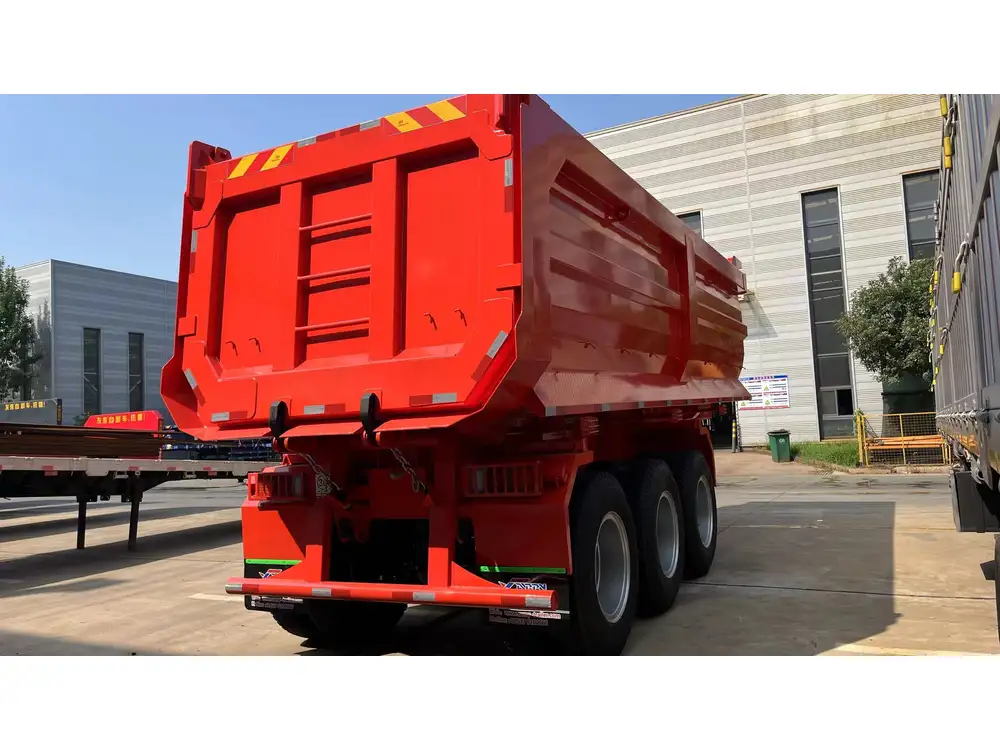The transportation of livestock, particularly sheep, requires careful planning and consideration of various factors. Understanding how many sheep can fit in a semi-trailer involves multiple elements, including trailer dimensions, sheep size, and weight limits. In this comprehensive guide, we will delve into these aspects to provide a clear answer and additional insights into best practices for livestock transportation.
Understanding Semi-Trailer Specifications
Before calculating how many sheep can be transported, it’s vital to grasp the specifications of a standard semi-trailer.
Dimensional Overview
| Trailer Type | Typical Length | Width | Height | Capacity |
|---|---|---|---|---|
| Standard Semi-Trailer | 53 feet | 8.5 feet | 13.5 feet | Approximately 26,000 lbs |
| Livestock Semi-Trailer | 48-53 feet | 8.5 feet | 8-12 feet | Typically designed for around 45 sheep |
| Gooseneck Trailers | 20-40 feet | Varies | 8-13.5 feet | Relatively lower weight capacity |

Common Trailer Types for Sheep Transport
- Standard Semi-Trailers: Commonly used but not always ideal for livestock due to their design and space constraints.
- Livestock Semi-Trailers: Specifically designed for transporting animals, featuring ventilation and lower floors for ease of loading and unloading.
- Gooseneck Trailers: Popular for smaller hauls; they offer flexibility in transporting various livestock forms, including sheep.
Sheep Size and Weight Considerations
The average weight and size of sheep can vary significantly based on breed and age. Here’s a breakdown of common sheep breeds:
| Breed | Average Weight | Average Length (including nose to tail) | Average Height |
|---|---|---|---|
| Merino | 90-180 lbs | 30-40 inches | 20-30 inches |
| Suffolk | 150-250 lbs | 35-45 inches | 24-36 inches |
| Dorset | 120-240 lbs | 32-40 inches | 22-30 inches |
| Hampshire | 140-270 lbs | 32-44 inches | 24-34 inches |
Estimating Space Per Sheep
For practical purposes, we can consider:
- Space per Adult Sheep: Approximately 10 to 12 square feet.
- Weight Limitations: A livestock trailer often has a weight limit typically around 26,000 lbs, which includes animals and the trailer’s own weight.

Calculating the Number of Sheep in a Semi-Trailer
boxCalculating Basic Capacity
To determine how many sheep can fit in a semi-trailer, follow these calculations:
- Determine Usable Space: Subtract the space taken up by the trailer itself (considering interior dimensions) from overall dimensions.
- Calculate Weight Limits: Divide the weight limit of the trailer (e.g., 26,000 lbs) by the average weight of a sheep.
Example Calculation
Assuming you are using a livestock semi-trailer with a usable interior area of approximately 900 square feet:
- Total Space: 900 square feet
- Average Space Per Sheep: Approx. 12 square feet
- Number of Sheep by Space:
900 sq ft ÷ 12 sq ft/sheep = 75 sheep
- Weight Constraint:
- If sheep weigh an average of 150 lbs, then
26,000 lbs ÷ 150 lbs/sheep ≈ 173 sheep
- If sheep weigh an average of 150 lbs, then

Result
The actual number of sheep transported will be determined by the lesser figure from the two calculations. In this case, you could fit about 75 sheep, considering space constraints rather than weight limits.
Factors Influencing Capacity
Several factors can influence the capacity beyond simple calculations:
- Sheep Size: Smaller breeds allow for more sheep per load.
- Loading Technique: Efficient loading can create small spaces for more sheep.
- Ventilation Needs: Also affects how packed sheep can be; more space often means better air circulation.
- Legal Regulations: Depending on the region, transport regulations may limit the number of sheep.
Best Practices for Transporting Sheep
To ensure a safe and effective journey for sheep being transported:

1. Prepare the Trailer
Before loading the sheep:
- Clean and disinfect the trailer.
- Ensure proper ventilation and comfort.
- Check flooring for safety; it should be smooth and solid to avoid injury.
2. Monitor Health
Ensure all sheep are healthy before transport to minimize risk. Conduct regular checks:
- Look for signs of illness or stress.
- Consider bringing a veterinarian for large hauls.
3. Maintain Hydration and Nutrition
During long hauls:
- Provide water at regular intervals.
- Consider supplements or feed if more than 12 hours of travel is expected.

4. Follow Legal Regulations
Depending on your location, various laws govern the treatment and loading of livestock:
- Minimum space requirements.
- Journey time limits and rest breaks.
- Licensing for transporting animals.
Common Questions about Sheep Transport
Can sheep be transported in standard trailers?
While possible, it is not recommended. Standard trailers may not provide the necessary ventilation and space for sheep, potentially compromising their well-being.

What is the best time of year to transport sheep?
Spring and autumn are usually optimal due to milder temperatures, while extreme weather can lead to additional stress and health risks.
How do I ensure sheep do not become stressed during transport?
Regular petting during loading, using familiar tools, and allowing rest periods can significantly reduce anxiety and make the transport smoother.
What are the signs of stress in sheep during transport?
- Vocalizations: Persistent bleating.
- Movement: Attempting to escape or overcrowded areas.
- Aggression: Increased fighting among the flock.

What should be the ideal loading density?
Based on various studies, a maximum density of 10-12 square feet per sheep is recommended to ensure comfort and reduce stress levels during transport.
Conclusion
Translating the query “how many sheep can you fit in a semi-trailer” involves understanding key parameters such as trailer specifications, sheep size, and weight limitations. Considering both space and weight constraints, a typical livestock semi-trailer can hold around 75 sheep, though specific numbers can vary based on breed and loading practices.
When transporting sheep or any livestock, prioritizing animal welfare is not just a legal requirement but also foundational for ethical practices in farming and transport. By adhering to best practices and regulations, you ensure a safe journey for your valuable livestock, leading to enhanced efficiency and productivity in your operations.



